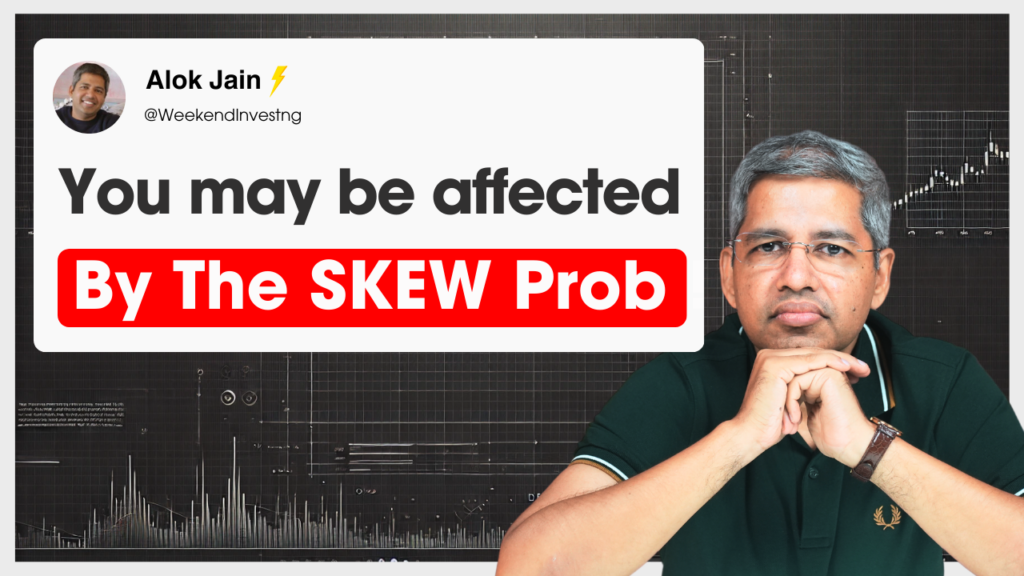
What a start to this year it has been! The market has been relentlessly trending downward, with no signs of slowing down. In fact, today’s early drop was met with a sharp bounce in the second hour, giving us some hope. However, despite these short-term reversals, the market continued its downward trajectory. It seems the bottom is still elusive, and we’re not out of the woods just yet.
We are also excited to announce the launch of a new series called Momentum Misfits, starting this Sunday. This series will dive into momentum scoring and explore how stocks that have lost momentum should ideally be removed from your portfolio.
Where is the market headed?
Market Overview
For the third consecutive day, the market closed in the red, continuing a trend that’s been evident in five out of the last six sessions. Only one session during this period saw a brief pause. The market has now become oversold, down 0.4% today, yet it hasn’t broken below its previous lows, which is a small silver lining. However, other segments of the market, such as mid-caps, have already breached their November lows, which is a troubling sign.
The markets are under a firm bearish grip, with bulls unable to make any meaningful recovery. This situation has persisted for nearly four months now, which is unusually long. Typically, you’d expect a solid bounce in any six-month market period, and while we did experience a minor one, it wasn’t the kind of recovery many were hoping for. But, based on my personal gut feeling, I think we may be closer to a bounce, perhaps triggered by upcoming events such as the budget outcome in 20 days or the Trump inauguration in 10 days. A combination of these factors might cause a panic bottom, which could mark the temporary bottom for this market cycle.
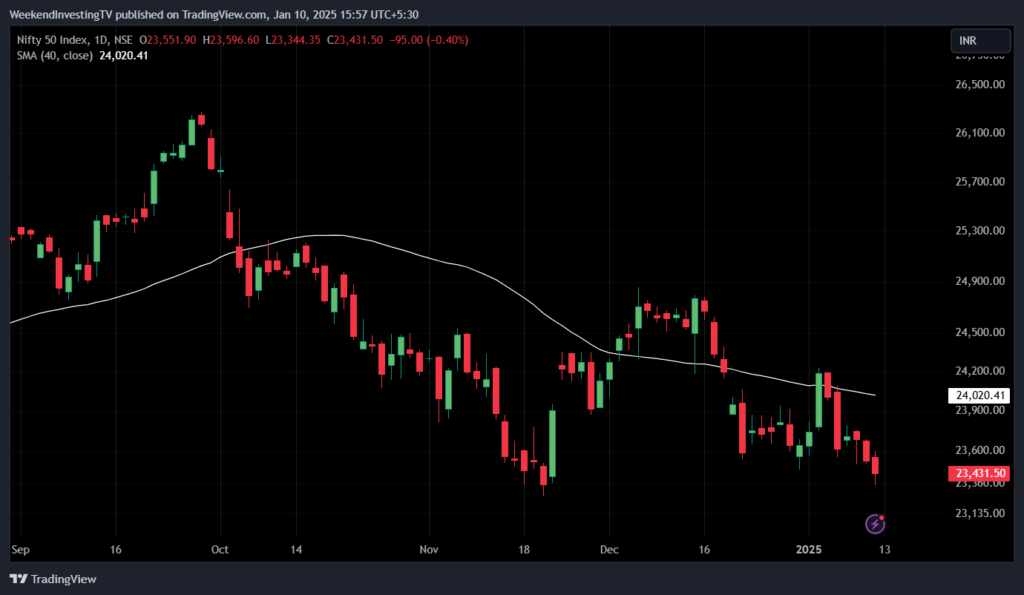
Nifty Next 50
Nifty Junior continued to go down, another 2% today. Absolutely smashed down in the last six sessions from nearly a high of 78,000. We are down to 64,000 which is nearly, I think 17 or 18% and that is getting quite, quite deep
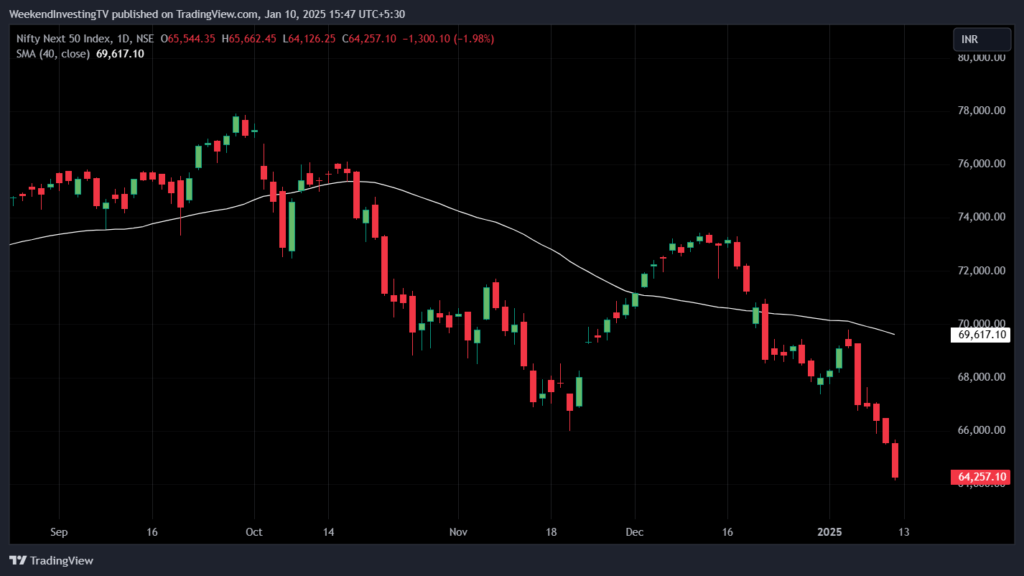
Nifty Mid and Small Cap
mid-caps are in a deep slump. Small-caps are following suit, down by 2.44%,
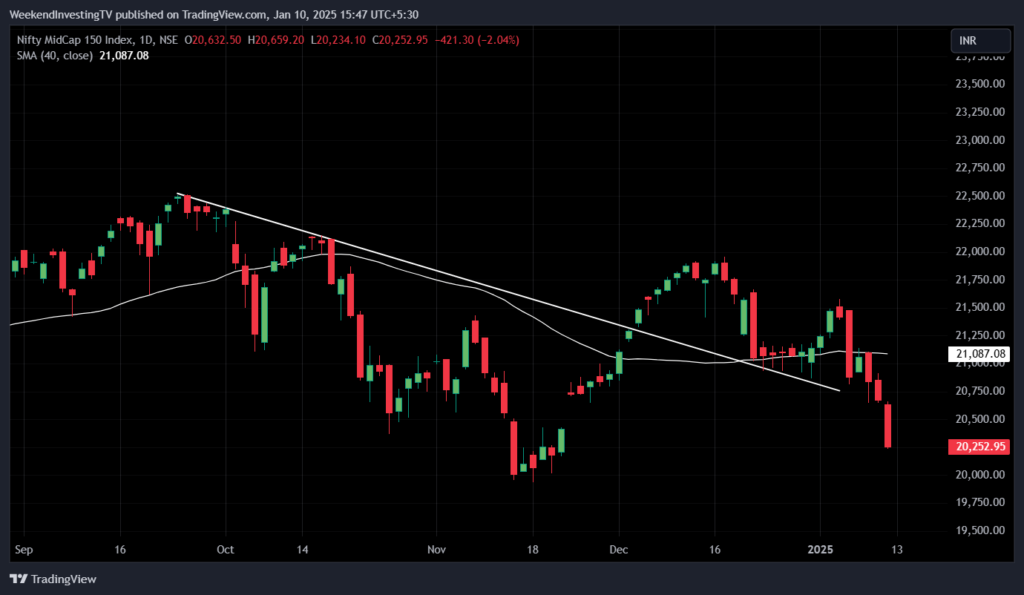
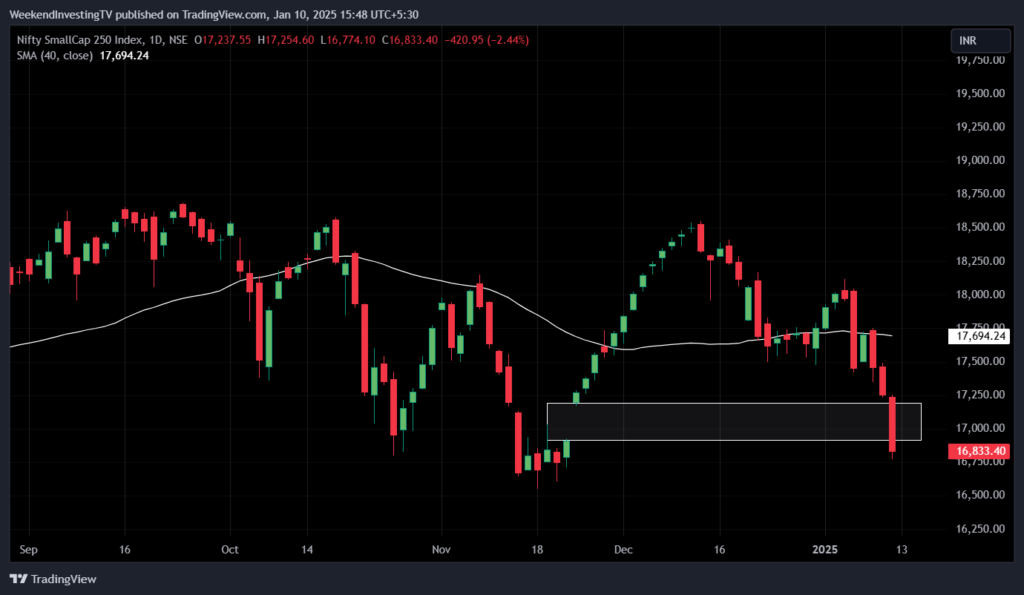
Nifty Bank Overview
Bank Nifty also took a hit, falling 1.55%. The Bank Nifty, once trading near 54,000-55,000, has now dropped to 48,000, marking a 13-14% decline. We are likely nearing oversold conditions on several of these indices.
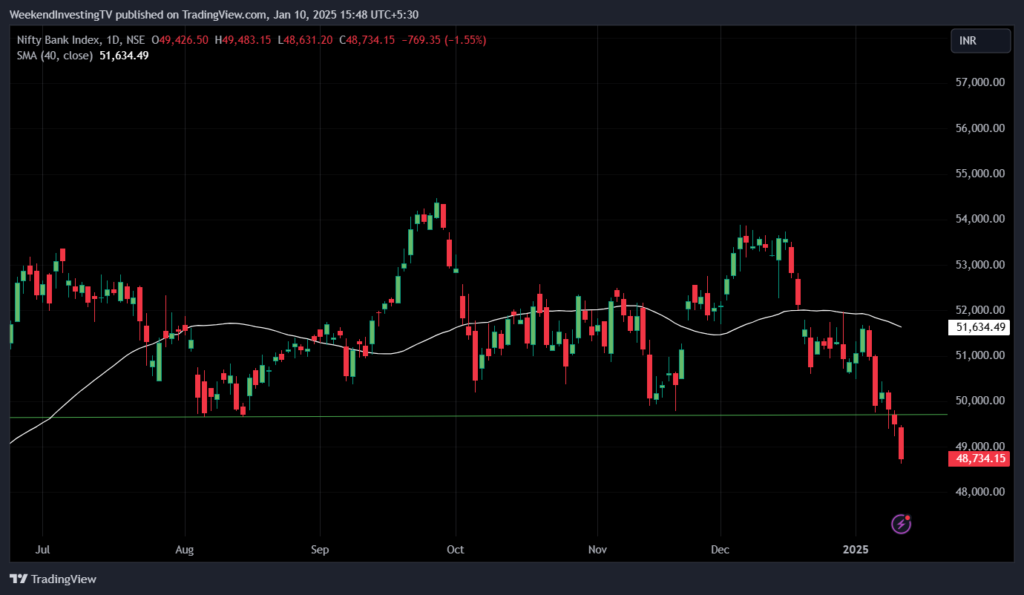
Advanced Declined Ratio Trends
Momentum distribution in the market today is heavily skewed toward the red, with 430 stocks declining compared to only 70 advancing.

Nifty Heatmap
In the Nifty heatmap, there’s only one green spot, and that’s TCS, which rose 5.6%. Despite a report revealing that TCS had its worst results in the last nine years, the stock still managed a significant jump. Other IT stocks, including HCL Tech, Infosys, and Wipro, also saw some gains, but they were not enough to offset the broader market downturn.
It’s clear that the IT sector is working hard to save the day, but it couldn’t prevent the widespread sell-off that affected sectors like cement, autos, banks, energy, FMCG, and pharma. Even stocks from established names like Hindustan Unilever, Nestle, and Britannia remained flat, which in this weak market environment can be considered relatively positive. On the flip side, stocks in the Adani Group and Bharat Electronics all took a hit.
The Nifty Next 50 index was also engulfed in red, with virtually every stock in this index moving downward. Among the very few exceptions were LTIM and a lesser-known stock, both showing slight positive movement. However, the trend was overwhelmingly bearish across the board.
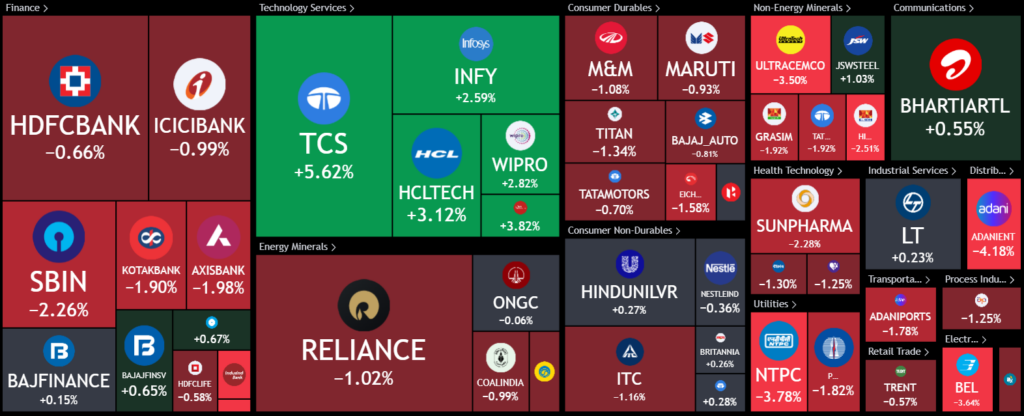
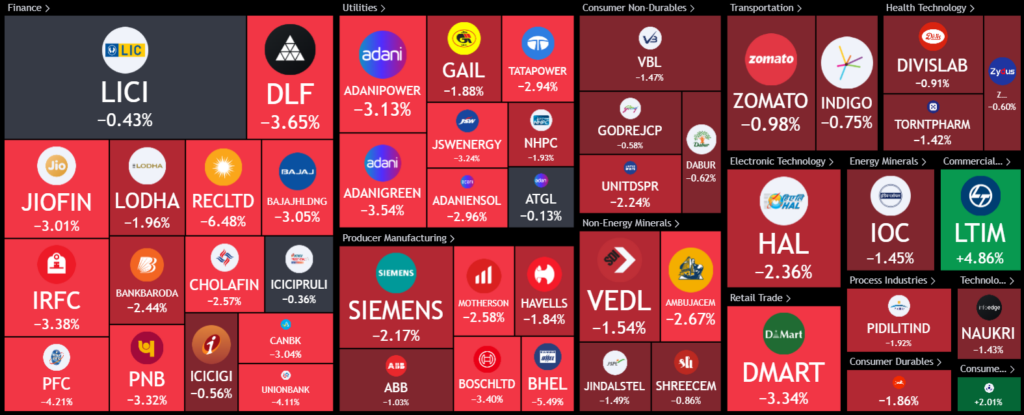
Sectoral Overview
As for sector performance, the damage was widespread. Real estate stocks were down by 2.8%, PSU stocks dropped by 2.7%, and public sector enterprises saw a 2.4% decline. Pharma, surprisingly, also saw a drop of 2.1%. Typically, pharma is a defensive sector that holds up well during market downturns, but after a strong performance over the past year, profit booking seems to be taking place.
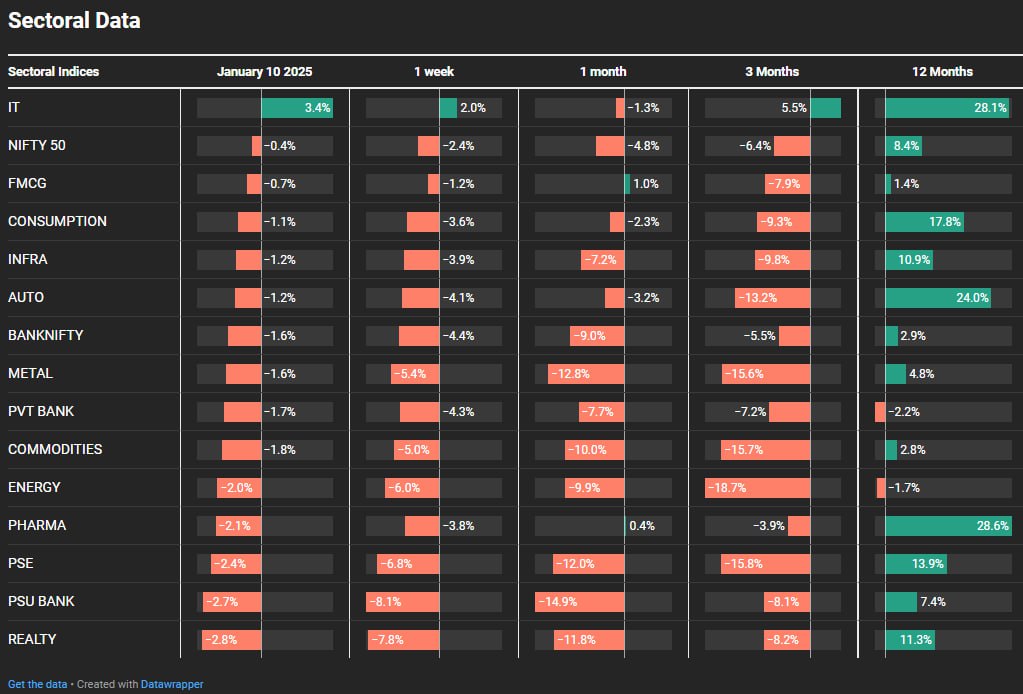
Sectors of the Day
Nifty IT Index
In contrast, the IT sector gained 3.4%, continuing to perform well even amid the broader market weakness. Over the past 12 months, IT stocks have seen a 28% increase, making it one of the top-performing sectors, along with autos, which are up 24% for the year. However, even autos saw a decline of 1.2% today. It’s clear: there was nowhere to hide in today’s market.
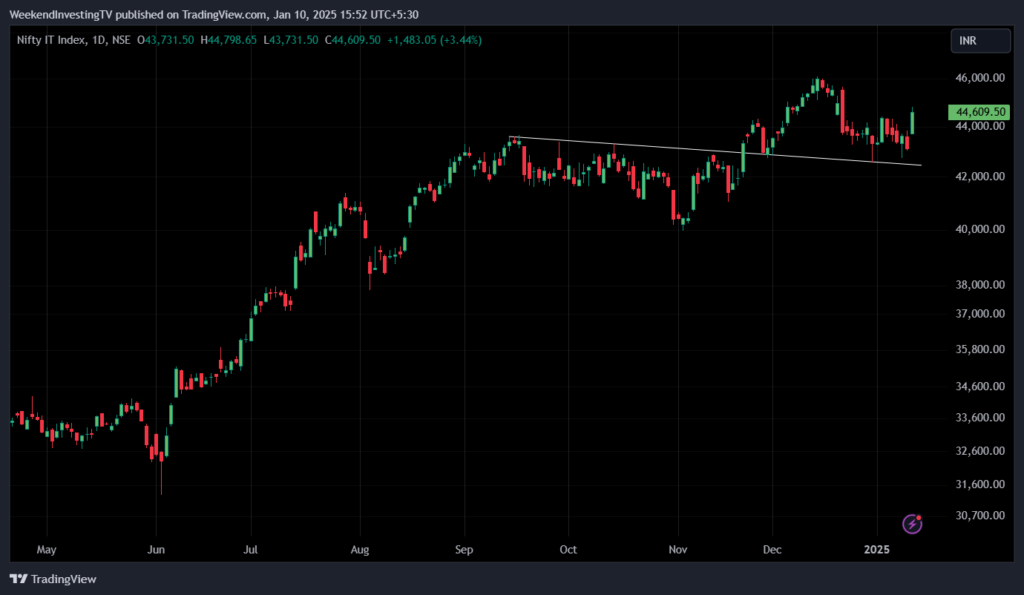
Story of the Day : The stock decision trap
What is the skew problem? Let’s take a simple example of index investing. Index investing is a great starting point for beginners. It helps you form the habit of investing. By investing a little amount in a Nifty ETF or a Nifty mutual fund, you get used to the market ecosystem, the transactions, the Demat account, and how your index units will be treated. Let’s say you’re investing 100 rupees in Nifty50 every month. Now, where is that 100 rupees going? You may think it’s going into the Nifty, but within Nifty, how is it getting distributed?
The distribution is skewed. For example, 40 rupees of your 100 rupees might go to five stocks, another 18 rupees might go to four stocks, another 11 rupees to another four stocks, and so on. There are some stocks that get very little money. The 46th to 50th stocks, these five stocks, get only a total of 2 rupees. This is an example of skewed distribution, meaning some stocks get more of your money allocated to them. About 70% of your money goes into just 30% of the stocks in the index.
For instance, HDFC Bank is 12% of Nifty, so 12 rupees from your 100 rupees will go to HDFC Bank. Reliance, being 8% of Nifty, gets another 8 rupees. On the other hand, stocks like Sun Pharma will only get about 1.8 rupees out of your investment. So different stocks get different amounts of allocation based on their weight in the index. Over the last 12 months, Nifty has returned about 8.8%. Let’s see how each component has contributed to this return.
The top 10 stocks, which have 57% of the total weight, have averaged 20% returns this year, which is far better than the 8.8% return of Nifty. The 11th to 20th stocks, with a combined weight of 18.7%, have averaged 12% returns. The 21st to 30th stocks, with a 10% total weight, have averaged 25% returns, much higher than the 8.8% return of Nifty. The 31st to 40th stocks, with only 8% weight, have returned 8.3%, slightly lower than Nifty. The last 10 stocks, with just 5.4% weight, have returned only 1.2%, much lower than Nifty’s return.
Now, let’s look at the top performers within Nifty. The top 10 performers in the last 12 months had only 14.8% of the total weightage of Nifty. Yet, these stocks returned an average of 54.8%, much higher than Nifty’s 8.8%. For example, Mahindra Mahindra had a return of 81% with a weightage of only 2.7%, Bharat Electronics had a 59% return with less than 1% weightage, and Shriram Finance had a 42% return with just 0.13% weightage.
Now, look at the heavyweights of Nifty: HDFC Bank, which has a 12% weightage, returned only 4.9% this year. Why should I put my money in HDFC Bank for a 4.9% return when I could allocate it elsewhere for much better returns? Similarly, Reliance, with an 8.2% weight, returned only 5.7%. Why should I stay invested in Reliance this year?
So, what’s the key takeaway? Two simple steps for better outcomes:
Maybe you can choose an equal-weighted Nifty product instead of investing in the index as it is.
Or, identify the strong performers within the index, remove your laggards, and stay invested with strength. If you do this consistently, you’re likely to come closer to the performance of the top 10 performers, thus avoiding the skew problem that exists in the index.

WeekendInvesting launches – PortfolioMomentum Report
Disclaimers and disclosures : https://tinyurl.com/2763eyaz






